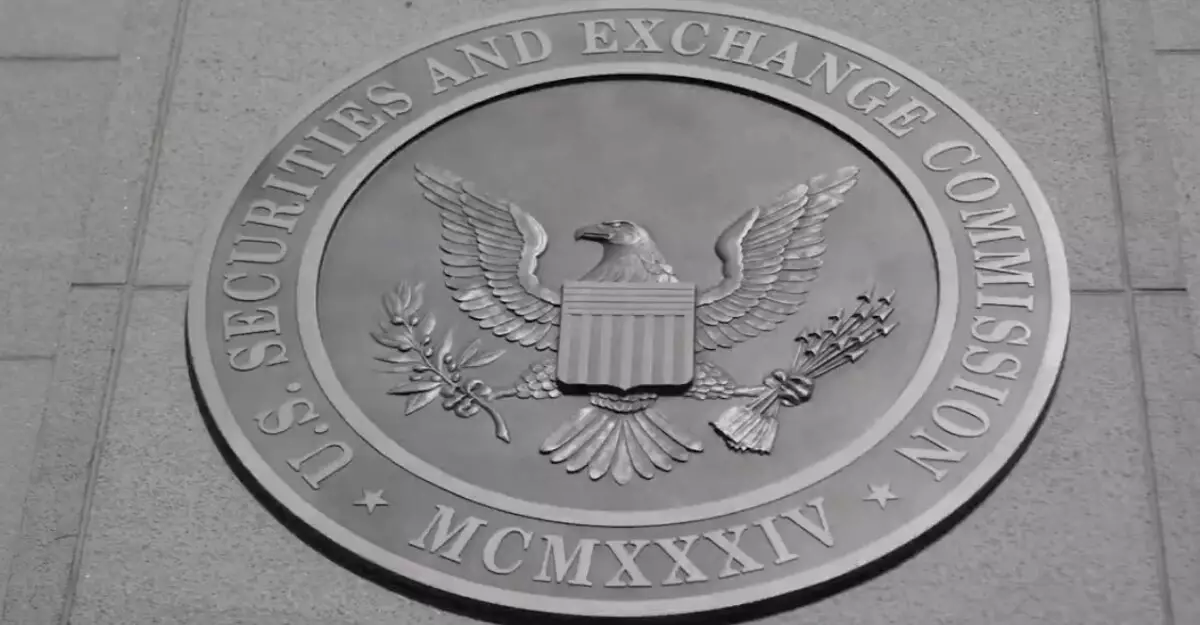The emergence of cryptocurrencies has thrust us into a whirlwind of innovation, opportunity, and, inevitably, chaos. Amidst this tumult, the U.S. Securities and Exchange Commission (SEC) has been tasked with an almost Sisyphean challenge: regulating a financial ecosystem that seems to evolve faster than regulatory bodies can keep pace. Following directives from former President Donald Trump, the SEC has initiated a series of roundtable discussions aimed at establishing a framework for safer crypto trading. However, the real question is—can these measures effectively bridge the chasm between innovation and regulation, or are we merely witnessing a well-orchestrated charade?
The SEC’s Approach: A Mixed Bag of Intentions
As the regulatory landscape takes shape, the SEC’s Crypto Task Force has convened panelists from high-profile tech and finance institutions. While the intention of this roundtable meeting is commendable—seeking to protect national financial security—the presence of major players such as Coinbase and Uniswap raises concerns about whether the SEC might inadvertently be tailoring regulations favoring established entities, leaving smaller innovators in the lurch. There’s an inherent danger in having the fox guard the henhouse; when industry leaders are at the table, the discourse can skew to favor their existing monopolies rather than fostering a flourishing marketplace for innovation.
The choice of panelists, including Gregory Tusar of Coinbase and Katherine Minarik of Uniswap Labs, signals a decision by the SEC to consult with those who are perceived as industry frontrunners. However, it begs the question: are these companies truly representative of the broader crypto landscape? The voices of independent developers, small startups, and concerned average crypto investors must be amplified—if they are absent from this regulatory dialogue, we risk creating an echo chamber that could stifle genuine innovation.
Public Engagement: A Step in the Right Direction?
The SEC’s commitment to gather public feedback post-roundtable is admirable but also fraught with skepticism. How seriously will the Task Force take the suggestions from everyday citizens and smaller players? While inviting public input is a necessary step toward transparency, the historical reluctance of agencies to act on public input can render these meetings little more than a formality. The agency assures that public engagement will aid in drafting sensible, fair regulations, yet the political reality often dictates that decisions favor established interests. The administration’s pressure to finalize these rules by a tight deadline also raises concern—will haste lead to hastily-crafted regulations that could usher in further instability?
A Political Undertow: The Shadows of Trump-era Directives
Examining the larger political context, it is crucial to acknowledge that Trump’s administration’s overt pro-crypto stance intertwines with its broader, often controversial, financial policies. While the aim to create a strategic reserve of cryptocurrencies may seem progressive, one cannot ignore the tone of populism that characterizes Trump-era economic approaches. The populist agenda may prioritize immediate growth and visibility over long-term sustainability and consumer protection. This begs the question: in our rush to embrace the future of finance, are we also putting critical safeguards on the back burner?
Moreover, while the SEC’s roundtable initiative has captured headlines, there is apprehension about whether these regulations will truly serve the best interests of a diverse cryptocurrency ecosystem. With major players already well-equipped to navigate regulatory hoops, the disparity between them and smaller entities could widen significantly, entrenching existing power dynamics within the industry.
The Illusion of Clarity?
The discussions surrounding crypto regulations aim for “clarity,” yet the complexity of the cryptocurrency space challenges even seasoned experts. Terms like “stablecoins” have recently been addressed, but navigating the murky waters of decentralized finance, non-fungible tokens, and the myriad other innovations remains daunting even for the SEC. The reality is that regulatory frameworks, particularly for digital assets, must evolve dynamically alongside technological advancements. A rigid, heavy-handed approach could quickly become obsolete, suffocating a thriving sector under the weight of bureaucratic oversight.
While the SEC’s current initiatives are an attempt to bring structure to a chaotic landscape, the myriad complexities of the crypto world make it clear that merely hosting roundtable discussions will not suffice. It is imperative for regulators to stay vigilant and adaptable, inviting diverse voices into the conversation to forge a holistic, inclusive, and forward-thinking approach to crypto regulation. Only then can we hope for a regulatory landscape that balances safety and innovation, leaving room for technological growth rather than suffocating it under the weight of outdated frameworks.


Leave a Reply